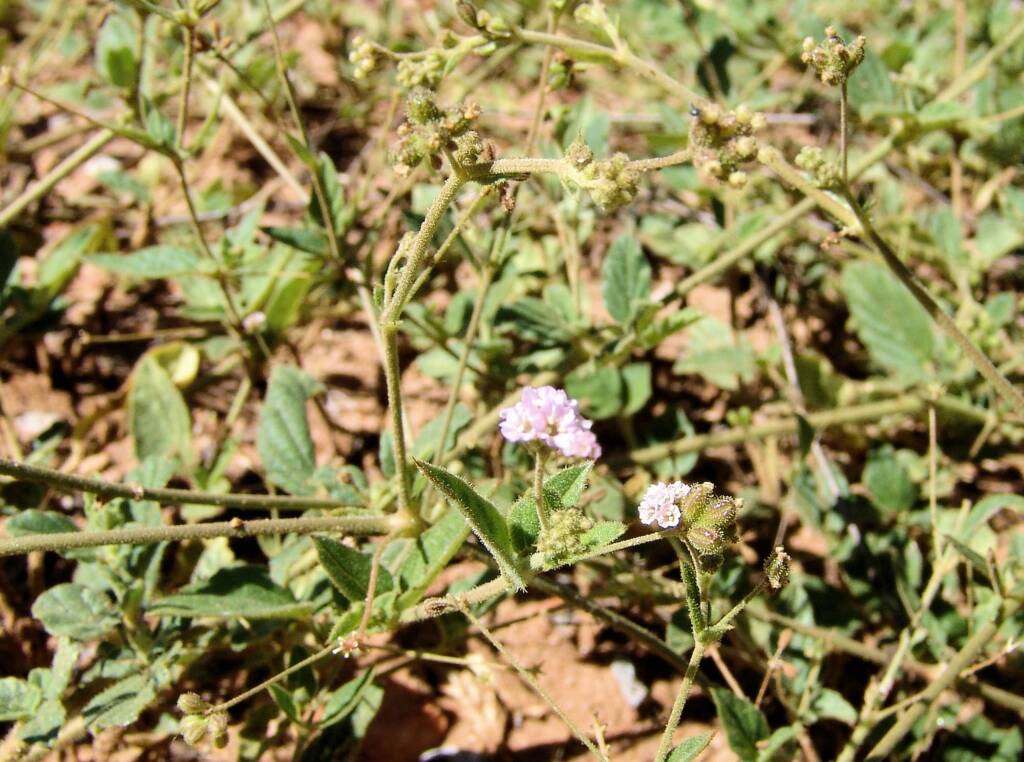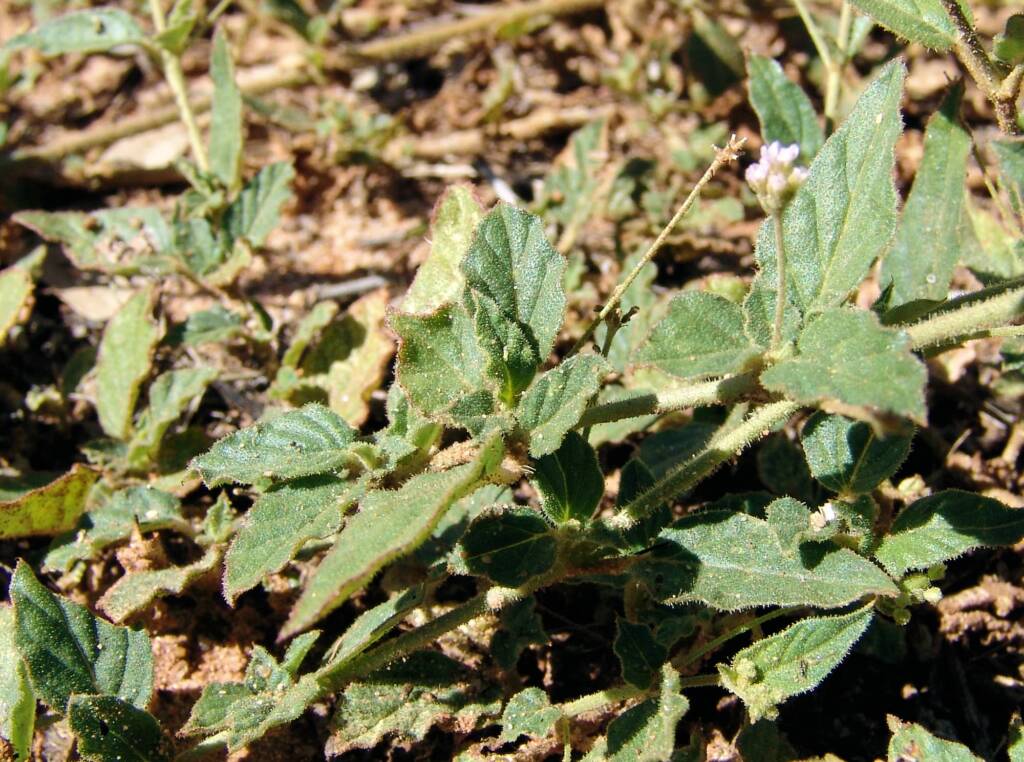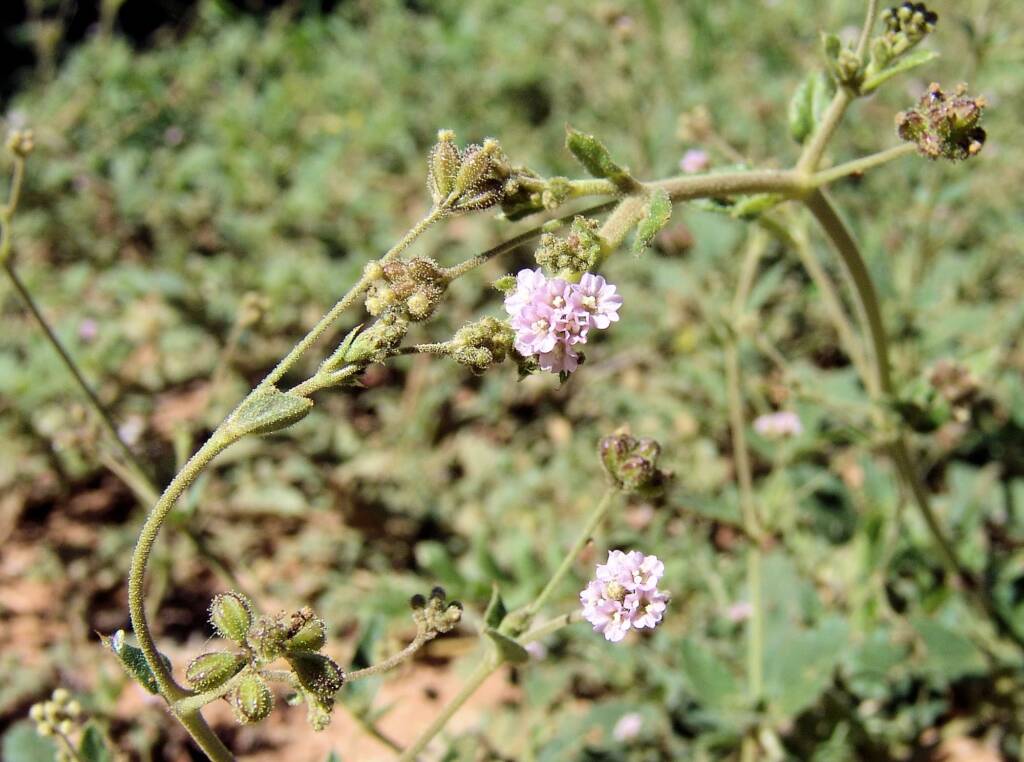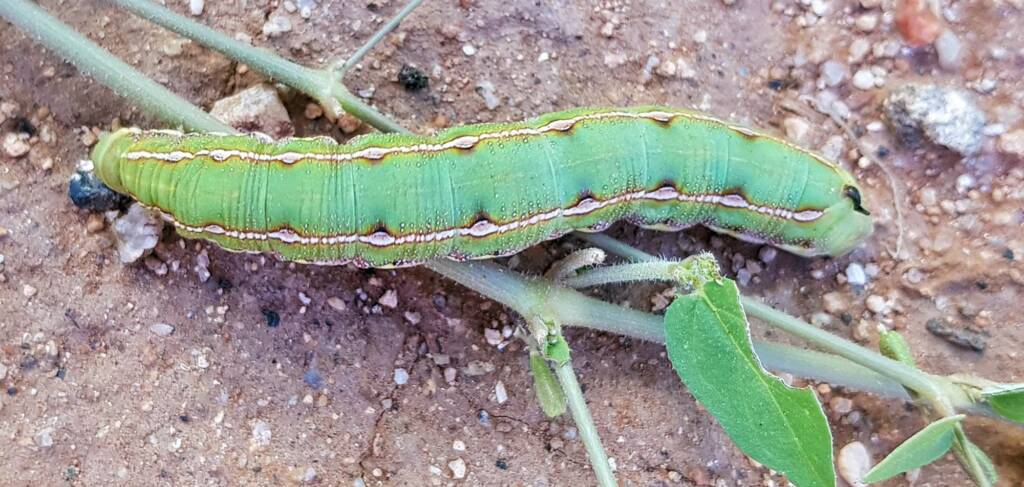The Tar Vine (Boerhavia coccinea), sometimes confused with Boerhavia diffusa, is quite a common weed found throughout mainland Australia. From the genus Boerhavia, there are several species across Central Australia and the Northern Territory, with B coccinea being the most common.
A prostrate vine-like perennial, it has small pink to lilac flowers. The Boerhavia coccinea vine can trail for up to 3 metres, with the whole plant being very sticky, although in some species it is the twining stems of the plant and the fruit that are very sticky.
The roots of the tar vine are an important food source during times when food is scarce, the root being eaten raw or lightly roasted by Aboriginal people. The skin is bitter, the roasting enabling the removal of the bitter skin. The tar vine is fibrous and bland.








The green yeperenye caterpillar (one of the large hawkmoths) is often found on tar vine, the caterpillar being an additional important food source.
The Pitjantjatjara people are known to gather the younger and mostly sticky parts of the vine and spread them around small waterholes. Small birds would come to the water hole and become entangled in the vine and were then easy to catch for food.


More info on Alice Springs Tar Vine and Instar of the Hyles livornicoides.
- Scientific classification
- Kingdom: Plantae
- Clade: Tracheophytes
- Clade: Angiosperms
- Clade: Eudicots
- Order: Caryophyllales
- Family: Nyctaginaceae
- Genus: Boerhavia
- Species: B. coccinea
- Binomial name: Boerhavia coccinea
- Synonyms:
- Boerhavia caribaea
- Boerhavia viscosa
Footnote & References
- Boerhavia spp. (tar vine), Bushfires & Bushtucker by Peter Latz, IAD Press, Alice Springs, NT, ISBN: 0-949659-96-7, p130-131
FloraFlora in Australia Flora Index Acacia Anigozanthos (Kangaroo Paws) Annual Yellowtop Apium prostratum subsp. prostratum var filiforme Apple Bush (Pterocaulon sphacelatum) Australian Bluebell Australian Gossypium Banksia Batswing Coral Tree Billy Buttons Birdsville Indigo Blue Pincushion Bush Banana Callistemon Callitris drummondii (Drummond’s Cypress Pine) Calothamnus quadrifidus Cape Honeysuckle Cassia fistula (Golden Shower) Cattle Bush Common Heath Crotalaria Darwinia wittwerorum (Wittwer’s Mountain Bell) Daviesia oppositifolia (Rattle-pea) Desert Oaks Drumsticks Eremophila Eucalyptus Ficus Flannel Cudweed (Actinobole uliginosum) Georges Indigo Goatshead Burr (Sclerolaena bicornis) Golden Everlasting Goodenia Gossypium Grass and Grasses Grass Trees Grevillea Grey Germander Hakea Kapok Bush (Aerva javanica) Lambertia sp Leptospermum MacDonnell Ranges Cycad Maireana scleroptera Mexican Poppy Minnie Daisy Mistletoe Family Nardoo Native Apricot Nicotiana megalosiphon subspecies sessilifolia Nuytsia floribunda Orange Spade Flower Orchidaceae Parakeelyas (Calandrinia) Pebble Bush (Stylobasium spathulatum) Perennial Yellow Top Pink Everlasting Pink Rock Wort Poached Egg Daisy Portulaca Proteaceae Ptilotus Quandong Resurrection Fern Rosy Dock Ruby Saltbush Santalum Solanum Spike Centaury Spinifex Storkbill (Erodum cygnorum) Striped Mint Bush Sturt’s Desert Pea Sturt’s Desert Rose Tall Saltbush Tangled Leschenaultia Tar Vine Tribulus eichlerianus Upside-down Plant Urodon dasyphylla Variable Daisy Waratah (Telopea) Wertabona Daisy White Cedar (Melia azedarach) White Indigo White Paper Daisy Wild Passionfruit Wild Stock Woolly-Headed Burr Daisy Woolly Bush Yellow-keeled Swainsona
